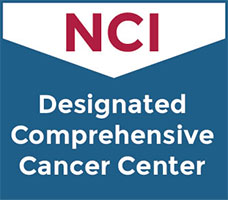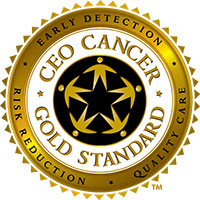Tabelecleucel for Solid Organ or Allogeneic Hematopoietic Cell Transplant Participants With Epstein-Barr Virus-Associated Post-Transplant Lymphoproliferative Disease (EBV+ PTLD) After Failure of Rituximab or Rituximab and Chemotherapy
Tabelecleucel for Solid Organ or Allogeneic Hematopoietic Cell Transplant Participants With Epstein-Barr Virus-Associated Post-Transplant Lymphoproliferative Disease (EBV+ PTLD) After Failure of Rituximab or Rituximab and Chemotherapy
The purpose of this study is to determine the clinical benefit and characterize the safety
profile of tabelecleucel for the treatment of Epstein-Barr virus-associated post-transplant
lymphoproliferative disease (EBV+ PTLD) in the setting of (1) solid organ transplant (SOT)
after failure of rituximab and rituximab plus chemotherapy or (2) allogeneic hematopoietic
cell transplant (HCT) after failure of rituximab.
profile of tabelecleucel for the treatment of Epstein-Barr virus-associated post-transplant
lymphoproliferative disease (EBV+ PTLD) in the setting of (1) solid organ transplant (SOT)
after failure of rituximab and rituximab plus chemotherapy or (2) allogeneic hematopoietic
cell transplant (HCT) after failure of rituximab.
Hematologic
Phase III
Both
Mol. targeted/Immunotherapy/Biologics
Tabelecleucel
Dholaria, Bhagirathbhai
National
Vanderbilt University
04-12-2019
Eligibility
0 Years
BOTH
NO
Inclusion Criteria:
Prior SOT of kidney, liver, heart, lung, pancreas, small bowel, or any combination of these (SOT cohort); or prior allogeneic HCT (HCT cohort)
A diagnosis of locally-assessed, biopsy-proven EBV+ PTLD
Availability of appropriate partially HLA-matched and restricted tabelecleucel has been confirmed by the sponsor
Measurable, 18F-deoxyglucose (FDG)-avid (Deauville score 3) systemic disease using Lugano Classification response criteria by positron emission tomography (PET)-diagnostic computed tomography (CT), except when contraindicated or mandated by local practice, then magnetic resonance imaging (MRI) may be used.For subjects with treated central nervous system (CNS) disease, a head CT and/or brain/spinal MRI as clinically appropriate will be required to follow CNS disease response per Lugano Classification response criteria.
Treatment failure of rituximab or interchangeable commercially available biosimilar monotherapy (SOT subgroup A or HCT cohort) or rituximab plus any concurrent or sequentially administered chemotherapy regimen (SOT subgroup B) for treatment of PTLD.
Eastern Cooperative Oncology Group performance status 3 for subjects aged 16 years; Lansky score 20 for subjects 16 years
For HCT cohort only: If allogeneic HCT was performed as treatment for an acute lymphoid or myeloid malignancy, the underlying primary disease for which the subject underwent transplant must be in morphologic remission
Adequate organ function
Absolute neutrophil count 1000/L, (SOT cohort) or 500/L (HCT cohort), with or without cytokine support
Platelet count 50,000/L, with or without transfusion or cytokine support. For HCT cohort, platelet count 50,000/L but 20,000/L, with or without transfusion support, is permissible if the subject has not had grade 2 bleeding in the prior 4 weeks (where grading of the bleeding is determined per the National Cancer Institute's Common Terminology Criteria for Adverse Events [CTCAE], version 5.0)
Alanine aminotransferase (ALT), aspartate aminotransferase (AST), and total bilirubin each 5 the upper limit of normal; however, ALT, AST, and total bilirubin each 10 upper limit of normal is acceptable if the elevation is considered by the investigator to be due to EBV and/or PTLD involvement of the liver as long as there is no known evidence of significant liver dysfunction
Subject or subject's representative is willing and able to provide written informed consent
Exclusion Criteria:
Burkitt lymphoma, classical Hodgkin lymphoma, or any T cell lymphoma
Daily steroids of > 0.5 mg/kg prednisone or glucocorticoid equivalent, ongoing methotrexate, or extracorporeal photopheresis
Untreated CNS PTLD or CNS PTLD for which the subject is actively receiving CNS-directed chemotherapy (systemic or intrathecal) or radiotherapy at enrollment. NOTE:Subjects with previously treated CNS PTLD may enroll if CNS-directed therapy is complete.
Suspected or confirmed grade 2 graft-versus-host disease (GvHD) per the Center for International Blood and Marrow Transplant Research consensus grading system at enrollment
Ongoing or recent use of a checkpoint inhibitor agent (eg, ipilimumab, pembrolizumab, nivolumab) within 3 drug half-lives from the most recent dose to enrollment
For HCT cohort: active adenovirus viremia
Need for vasopressor or ventilatory support
Antithymocyte globulin or similar anti-T cell antibody therapy 4 weeks prior to enrollment
Treatment with Epstein-Barr virus cytotoxic T lymphocytes or chimeric antigen receptor T cells directed against B cells within 8 weeks of enrollment (SOT or HCT cohorts), or unselected donor lymphocyte infusion within 8 weeks of enrollment (HCT cohort only)
Female who is breastfeeding or pregnant or female of childbearing potential or male with a female partner of childbearing potential unwilling to use a highly effective method of contraception
Inability to comply with study-related procedures
Prior SOT of kidney, liver, heart, lung, pancreas, small bowel, or any combination of these (SOT cohort); or prior allogeneic HCT (HCT cohort)
A diagnosis of locally-assessed, biopsy-proven EBV+ PTLD
Availability of appropriate partially HLA-matched and restricted tabelecleucel has been confirmed by the sponsor
Measurable, 18F-deoxyglucose (FDG)-avid (Deauville score 3) systemic disease using Lugano Classification response criteria by positron emission tomography (PET)-diagnostic computed tomography (CT), except when contraindicated or mandated by local practice, then magnetic resonance imaging (MRI) may be used.For subjects with treated central nervous system (CNS) disease, a head CT and/or brain/spinal MRI as clinically appropriate will be required to follow CNS disease response per Lugano Classification response criteria.
Treatment failure of rituximab or interchangeable commercially available biosimilar monotherapy (SOT subgroup A or HCT cohort) or rituximab plus any concurrent or sequentially administered chemotherapy regimen (SOT subgroup B) for treatment of PTLD.
Eastern Cooperative Oncology Group performance status 3 for subjects aged 16 years; Lansky score 20 for subjects 16 years
For HCT cohort only: If allogeneic HCT was performed as treatment for an acute lymphoid or myeloid malignancy, the underlying primary disease for which the subject underwent transplant must be in morphologic remission
Adequate organ function
Absolute neutrophil count 1000/L, (SOT cohort) or 500/L (HCT cohort), with or without cytokine support
Platelet count 50,000/L, with or without transfusion or cytokine support. For HCT cohort, platelet count 50,000/L but 20,000/L, with or without transfusion support, is permissible if the subject has not had grade 2 bleeding in the prior 4 weeks (where grading of the bleeding is determined per the National Cancer Institute's Common Terminology Criteria for Adverse Events [CTCAE], version 5.0)
Alanine aminotransferase (ALT), aspartate aminotransferase (AST), and total bilirubin each 5 the upper limit of normal; however, ALT, AST, and total bilirubin each 10 upper limit of normal is acceptable if the elevation is considered by the investigator to be due to EBV and/or PTLD involvement of the liver as long as there is no known evidence of significant liver dysfunction
Subject or subject's representative is willing and able to provide written informed consent
Exclusion Criteria:
Burkitt lymphoma, classical Hodgkin lymphoma, or any T cell lymphoma
Daily steroids of > 0.5 mg/kg prednisone or glucocorticoid equivalent, ongoing methotrexate, or extracorporeal photopheresis
Untreated CNS PTLD or CNS PTLD for which the subject is actively receiving CNS-directed chemotherapy (systemic or intrathecal) or radiotherapy at enrollment. NOTE:Subjects with previously treated CNS PTLD may enroll if CNS-directed therapy is complete.
Suspected or confirmed grade 2 graft-versus-host disease (GvHD) per the Center for International Blood and Marrow Transplant Research consensus grading system at enrollment
Ongoing or recent use of a checkpoint inhibitor agent (eg, ipilimumab, pembrolizumab, nivolumab) within 3 drug half-lives from the most recent dose to enrollment
For HCT cohort: active adenovirus viremia
Need for vasopressor or ventilatory support
Antithymocyte globulin or similar anti-T cell antibody therapy 4 weeks prior to enrollment
Treatment with Epstein-Barr virus cytotoxic T lymphocytes or chimeric antigen receptor T cells directed against B cells within 8 weeks of enrollment (SOT or HCT cohorts), or unselected donor lymphocyte infusion within 8 weeks of enrollment (HCT cohort only)
Female who is breastfeeding or pregnant or female of childbearing potential or male with a female partner of childbearing potential unwilling to use a highly effective method of contraception
Inability to comply with study-related procedures



